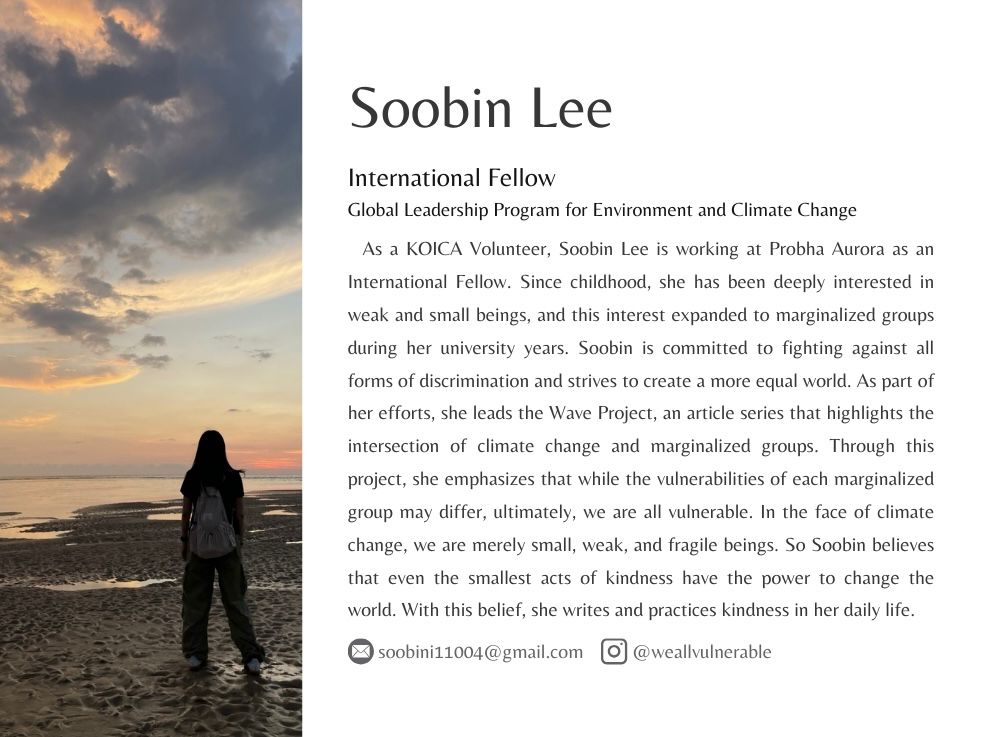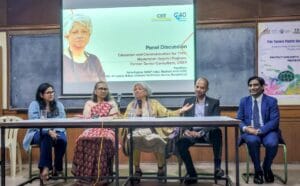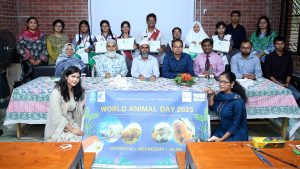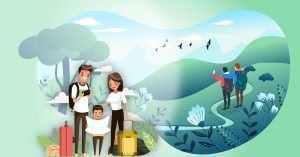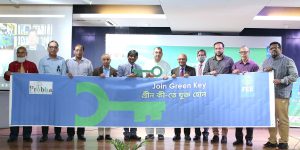Introduction: The Right to Be Protected from Any Form of Discrimination
“Every child must be protected from any form of discrimination based on race, gender, religion, social origin, or other status.”
- Excerpt from UNCRC, Part 1, Article 2
‘The United Nations Convention on the Rights of the Child (UNCRC)’, an international norm adopted to ensure the human rights of children under the age of 18, outlines the four fundamental rights of children: the right to survival, the right to protection, the right to development, and the right to participation. Specifically, the convention emphasizes that childhood is a period requiring special care and support, and that children need special protection and assistance, including legal safeguards, due to their physical and mental immaturity. In particular, Article 28 of Part 1, which addresses children’s right to education, states that all children have equal opportunities for education and are obligated to complete primary education. Nevertheless, a significant number of children are not guaranteed their basic rights, including the right to education.
Definition of Underprivileged Children
The marginalized group which this article focuses on is ‘Underprivileged Children’ in Bangladesh. Due to the absence of a dictionary definition for this term, the article aims to define underprivileged children by borrowing the broader definition of ‘vulnerable groups’ and incorporating the concept of ‘Intersectionality’. According to a report published by Ministry of Government Legislation in Korea, vulnerable groups refer to ‘populations that experience discrimination or disadvantages under the socio-economic structures of a society.’ A key characteristic of these groups is their exclusion from society. The concept of intersectionality, introduced by American legal scholar Kimberlé Crenshaw, serves as both a tool and theory for analyzing and explaining discrimination, inequality, and oppression. Intersectionality specifically explains the phenomenon in which various identities of an individual—such as gender, race, and class—are formed intersectionally, and discrimination also works in complex ways.
In summary, underprivileged children are defined as ‘a group of children who experience discrimination or disadvantages due to socio-economic factors.’ They are mainly excluded from access to quality education. When viewed through the lens of intersectionality, various social categories such as gender, ethnicity, and disability can be considered when discussing underprivileged children. However, this article focuses on their primary shared identities: Age and Class. underprivileged children are under the age of 18, and mainly belong to the low-income class and the poor due to lack of socioeconomic resources.
Children Excluded from Education
I am currently residing in Dhaka, Bangladesh, and as a KOICA-NGO volunteer in the climate and environment sector, I work for Probha Aurora, a youth-focused sustainable green enterprise in Bangladesh addressing climate change and environmental issues. As the national operator of FEE (Foundation for Environmental Education), Probha Aurora implements various education programs, the most representative of which is the Eco-Schools program. As part of this program, I visited some schools in Dhaka and became deeply interested in the issues of underprivileged children and educational inequality in Bangladesh.
Visiting both private and public schools revealed the extreme wealth disparities between schools. While private schools boasted clean and well-organized facilities and infrastructure comparable to university campuses in Korea, public schools did not even have proper school buildings. A public school located in a slum area, the building was a simple two-story structure with a rectangular courtyard, and there was a residential facility in the center of the building that was believed to be slum dwellings. Despite Bangladesh’s hot and humid tropical monsoon climate, the classrooms lacked adequate cooling and ventilation facilities. In the slum dwellings in the courtyard of the school, children who seemed not to attend school were spending time watching the students. These children, unable to attend school due to economic difficulties, broke my heart. What thoughts cross their minds when they see peer students attending school? Wouldn’t it make them think, ‘If you don’t have money, it’s natural that you can’t get an education’? Wouldn’t they grow up taking this educational inequality for granted?
Educational Inequality in Bangladesh
Underprivileged children in Bangladesh are not provided equal access to education and are excluded from quality education. The educational gap between social classes is also severe. According to a report ‘Bangladesh Education Fact Sheets 2020’ by UNESCO, 64% of children from high-income families have foundational reading skills, and 39% have foundational numeracy skills, compared to only 35% and 20%, respectively, for children from low-income families. This means the proportion of low-income children with foundational skills is only about half that of high-income children. The same disparity is evident across other indicators, such as literacy and ICT skills. UNESCO emphasizes that poverty directly impacts education, highlighting that low income is closely tied to low educational attainment. As such, income levels and education levels have a strong correlation, and the resulting educational gap deepens educational inequality in Bangladesh.
Underprivileged Children’s Vulnerability to Climate Change
According to a report ‘The Heat is On! Towards a Climate Resilient Education System in Bangladesh (2022)’ by UNICEF, nearly 20 million children in Bangladesh are highly exposed to climate hazards. 12 million children living in riverside areas are at risk of repeated flooding, and 3 million living in inland children are affected by long-term droughts. 4.5 million children living in coastal areas are at risk of a strong cyclone, nearly 500,000 of whom are Rohingya refugees. UNICEF’s Child-focused Climate Risk Index is an indicator that assesses children’s vulnerability to exposure to climate and environmental hazards, shocks, and stresses. In this indicator, Bangladesh ranks 15 out of 163 countries (2021).
It is important to note that the risks, shocks, and vulnerabilities caused by climate change do not occur in isolation. In other words, Climate change is not a standalone issue, but rather it worsens existing social and economic inequalities, while expanding a complex web of inequalities. Additionally, the risks associated with climate change affect marginalized groups first, hardest, and for the longest. From this perspective, it can be inferred that underprivileged children are directly exposed to climate change and its associated hazards due to the social and economic constraints of their group.
The Link Between Climate Change and Inequality in Education
Climate change directly affects the education of underprivileged children, exacerbating inequality in education. According to a report ‘Rising to the Challenge: Youth Perspectives on Climate Change and Education in Bangladesh (2021)’ by UNICEF, 78% of youth respondents stated that climate change had impacted their studies.
Another report by UNICEF specifically highlights how climate change hinders education access for underprivileged children in Bangladesh. Frequent natural disasters, such as cyclones and floods, caused by climate change, make underprivileged children travel to school challenging, and disrupt regular school attendance. Extreme climate events, particularly heatwaves, threaten classrooms, which are students’ academic spaces. Overcrowded classrooms without adequate ventilation or air conditioning significantly degrade the quality of learning.
The decrease in household income caused by climate change also contributes to increasing the student dropout rate as well as the child marriage rate. According to a report ‘Girls at the centre of the storm (2023)’ by Save the Children, each year, 9 million girls around the world are at risk of child marriage due to extreme climate change, and two-thirds of these early marriage cases occur in developing countries that are vulnerable to climate change. In the report, Bangladesh is included in the 10 countries most affected by climate change, where schools are frequently closed due to extreme climate disasters and the number of unstable families is rising due to unemployment. As a coping strategy for economic hardship, some families often resort to marrying off young daughters early. Child marriage is used as a countermeasure against economic difficulties caused by climate disasters. In conclusion, climate change negatively impacts the education of underprivileged children in Bangladesh, further deepening educational inequality in the country.
In the earlier sections, citing the UNICEF report, I emphasized that climate change should be viewed through a complex lens that considers the inequalities it causes and exacerbates, not as a standalone issue. This means that climate change cannot be discussed without discussing inequality. At the same time, it also means that solutions to climate change can contribute to addressing educational inequality. So, what should be the strategy for underprivileged children in Bangladesh to respond to climate change? What strategies are required to mitigate their vulnerability to climate change and enhance their adaptation capacity?
Underprivileged Children’s Coping Strategy to Climate Change
This article proposes ‘Climate Change Education’ as a strategy for underprivileged children to respond to climate change. According to Article 12, Part 1 of the UNCRC, all children should be guaranteed the right to speak out on events that affect them, and their views should be respected. In other words, children have the right to know about the situations affecting them and to freely express their opinions about them. To ensure these fundamental rights of children, they must receive appropriate education about climate change. One critical aspect to consider in climate change education for underprivileged children is their ‘agency’ as stakeholders in climate change. Underprivileged children are not only vulnerable to climate change but are also direct stakeholders who will experience its impacts firsthand. However, today’s discourse on climate change often excludes these stakeholders from the conversation. Therefore, climate change education for underprivileged children must go beyond merely delivering information. It should extend to providing them opportunities to actively participate in solving climate change issues as key stakeholders.
Child-Centered and Participatory Climate Change Education
As a case of climate change education for underprivileged children, this article introduces the Eco-Schools’ ‘Disaster Risk Reduction Toolkit (DRR Toolkit)’, which is designed to reduce disaster risks caused by climate change. DRR Toolkit proposes practical activities enabling children in the Indian Ocean region, including Bangladesh, to analyze the disaster risks within their communities and establish preparedness and preventive measures. Through its 12-step activities, students identify disaster risks around their schools and discuss their vulnerabilities. Furthermore, by transforming these vulnerabilities into capacities for climate adaptation, they can prevent damages from climate change and reduce disaster risks. Ongoing efforts by Probha Aurora to revise the DRR Toolkit to better align with Bangladesh’s specific country context further enhance its impact. By adapting the toolkit to local needs, Probha Aurora aims to expand its reach, ensuring that all educational institutions across the nation can benefit from improved safety and disaster preparedness measures. Climate change education through the DRR Toolkit has great significance in that it provides children with direct and proactive activities to reduce disaster risks, not just delivering knowledge.
In addition to the DRR Toolkit, Probha Aurora provides various climate change education programs for underprivileged children. A notable example is ‘Science Fair’, jointly organized by Probha Aurora and the Agami Foundation, which was established to address educational inequality in Bangladesh. Science Fair is a program in which underprivileged children consider ways to solve the climate change issues in Bangladesh and present these solutions as artistic works. The program is significant for offering hands-on, activity-based educational opportunities to underprivileged children.
Another remarkable example is ‘TTPC Challenge’, designed to address plastic pollution. Through this program, children learn about the severity of plastic pollution and engage in local clean-up activities following problem-solving guidelines. It is noteworthy how this program is conducted, as it trains youth trainers through education, and trained trainers educate other youth. These initiatives are youth-led programs that are both child-centered and participatory, highlighting their importance in providing meaningful climate change education.
Conclusion: For a Future Where No Child Is Marginalized
Underprivileged children in Bangladesh are among the most severely exposed to the risks of climate change, which significantly exacerbates the educational inequalities they face. To mitigate their vulnerability, child-centered and participatory climate change education is essential. This approach not only helps these children understand the challenges posed by climate change but also empowers them to actively participate in creating solutions. However, education alone is not enough. Efforts must be supported by comprehensive improvements in legal frameworks, institutional structures, and infrastructural systems.
Despite the importance of these initiatives, barriers such as inadequate funding, limited resources, and lack of community awareness hinder their implementation. Overcoming these challenges requires stronger partnerships between local organizations, international agencies, and government bodies to provide the necessary financial and technical support. For example, expanding programs like Probha Aurora’s Eco-Schools initiative nationwide could be transformative, fostering resilience and equity among underprivileged children across Bangladesh.
This is a collective responsibility. Society must protect and promote the rights of underprivileged children, as a critical first step toward addressing the intertwined crises of climate change and inequality. I urge readers to join this cause—whether by supporting educational initiatives, advocating for policy changes, or contributing resources. Together, we can build a future where no child is marginalized.
